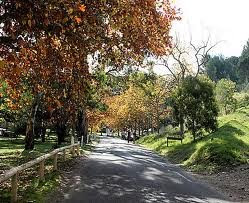 Recently while clearing up my room I happened to stumble upon some of my high school NCERT textbooks. Dust laden with tattered edges, I fondly turned over the pages of my class 8 hindi textbook. Entire paragraphs were underlined and marked with the "v imp" indicating very important for exams, and the tougher words had their word meanings in english crammed between the line spaces. The fading text brought back a barrage of high school memories. I happened to be one of the not so happening students at school who decided to choose Hindi instead of French as the second language. The downside was that in the late nineties, when it came to the Boards , hindi was not high scoring .
Recently while clearing up my room I happened to stumble upon some of my high school NCERT textbooks. Dust laden with tattered edges, I fondly turned over the pages of my class 8 hindi textbook. Entire paragraphs were underlined and marked with the "v imp" indicating very important for exams, and the tougher words had their word meanings in english crammed between the line spaces. The fading text brought back a barrage of high school memories. I happened to be one of the not so happening students at school who decided to choose Hindi instead of French as the second language. The downside was that in the late nineties, when it came to the Boards , hindi was not high scoring .But now I reflect on the abundance of wisdom the stories and poems showered on us. The stories of Premachand , poems by Harivansh Rai Bachchan, Subhadra Kumari Chauhan, Suryakanth Tripathi Nirala were richly textured with emotions and depicting the true Indian life and spirit.
The language was taught to us by gentle north indian teachers, ( it was an indian school in the middle east), and they took great pains in taking us through the depths of some of the poetry.
It was difficult to imagine how a whole world of wisdom hid amidst two lines of Kabir's doha. This was just a glimpse of the sufi mysticism. There have been several instances in my life when just contemplating on these dohas helped me clear dilemmas. These are definitely the oldest self help and motivational writings. Premchand stories enabled us to visualise and feel the rural India. The smell of earth, the cold winters , the poverty , the anxiety following delayed rains could be experienced. These few hours of prose kept our feet firmly grounded amidst the ongoing stresses of boards , entrance exams and focussing on professions that brought home the best pay packet.
One of my favourite poems is a poem called Mera Naya Bachpan by Subhadra Kumari Chauhan.
The poet fondly remembers her childhood days and now she is overpowered by a sense of loss of those carefree days. Then she sees her little daughter playing in mud and realises that her daughter has brought her back the lost childhood.
Before embarking on my journey through thermodynamics and quadratic equations, I am grateful to this language which gave me a glimpse of the world of delicate human emotions and the wonderful feeling of being an Indian.



